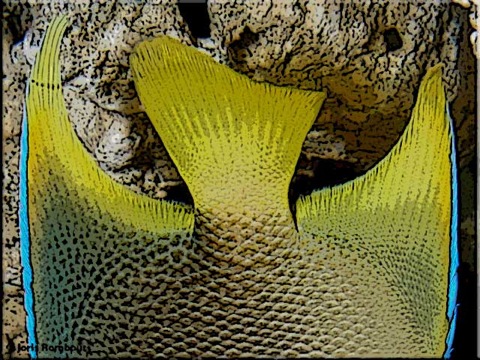- Check the sub-map for the specimen information files -
ANGELFISH - POMACANTHIDAE
Angelfish are generally bright colored and are very common on coral reefs. The best way to identify them is to look for the spine in front of the gill plates. Angelfish are slow as they only use their pectoral fins to swim. Most of them are territorial and all adult males have a harem of around five females. The Pomacanthus species has a very big territory, while the Centropyge family are only territorial for a few square meters. They are mostly seen swimming alone, but do sometimes live in pairs. The juveniles of the Pomacanthidae family look different than the adults, especially with the genus Pomacanthus. They prefer healthy coral or rocky reefs with many hiding places like cracks and holes. Angelfish mainly feed on algae, plankton, fish eggs, sponges and invertebrates. All angelfish are born as females but can change sex if necessary. The large adults of the Pomacanthus family can make loud knocking sounds when feeling threatened and use this sound to provoke intruders. Mating happens in open water during sunset; the male will swim up and start pushing against the female’s belly, forcing her to release eggs. After a month the larvae will come out and start their life somewhere on a reef.
- Check the sub-map for the specimen information files -

